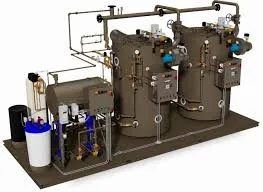
Авг . 30, 2024 13:09 Back to list
Low Temperature Hot Water Boilers - Efficient Heating Solutions
Low Temperature Hot Water Boilers An Overview
Low temperature hot water boilers are increasingly becoming a popular choice for both residential and commercial heating applications. These boilers operate at significantly lower temperatures compared to traditional hot water boilers, making them a more energy-efficient option for heating spaces. Typically, low temperature hot water systems operate in a temperature range between 130°F to 180°F (54°C to 82°C). This operation allows for several advantages, including increased energy efficiency, reduced emissions, and a longer lifespan for the heating system.
One of the key benefits of low temperature hot water boilers is their ability to work in conjunction with other heating technologies, such as heat pumps or solar thermal systems. By integrating these systems, users can harness a variety of renewable or low-cost energy sources, further decreasing operational costs and minimizing environmental impact. This integration is particularly important in the context of rising energy prices and increasing environmental concerns, as it offers a viable solution for reducing reliance on fossil fuels.
Additionally, low temperature hot water boilers typically require lower return temperatures, which can improve the overall efficiency of the system
. The reduced return temperature means that the boiler operates at optimal efficiency, resulting in lower fuel consumption and operating costs. As a result, users can enjoy a more cost-effective heating solution without sacrificing comfort or performance.low temperature hot water boilers

The design of these boilers allows for more versatile applications. Low temperature hot water systems can easily be utilized in underfloor heating, radiators, and fan coil units, making them suitable for a variety of settings. This versatility helps address specific heating requirements, ensuring comfortable and consistent indoor climates.
Moreover, environmental regulations and standards are becoming increasingly stringent. Low temperature hot water boilers can play a significant role in helping building owners comply with these regulations. Their lower operational temperatures lead to reduced NOx and CO2 emissions, contributing to a smaller carbon footprint. In many regions, government incentives and support for energy-efficient heating systems further promote the adoption of these technologies.
In conclusion, low temperature hot water boilers represent a progressive solution for modern heating needs. With their energy efficiency, compatibility with renewable energy sources, and reduced environmental impact, they are well-suited for both new installations and retrofits. As the focus on sustainability and energy-efficient technologies continues to grow, low temperature hot water boilers are likely to play an increasingly vital role in the heating landscape, providing comfort and efficiency for years to come.
-
High-Efficiency Commercial Oil Fired Steam Boiler for Industry
NewsJul.30,2025
-
High-Efficiency Biomass Fired Thermal Oil Boiler Solutions
NewsJul.30,2025
-
High Efficiency Gas Fired Thermal Oil Boiler for Industrial Heating
NewsJul.29,2025
-
High-Efficiency Gas Fired Hot Water Boiler for Sale – Reliable & Affordable
NewsJul.29,2025
-
High Efficiency Biomass Fired Hot Water Boiler for Industrial and Commercial Use
NewsJul.29,2025
-
High-Efficiency Biomass Fired Hot Water Boiler for Industrial Use
NewsJul.28,2025
Related PRODUCTS






















